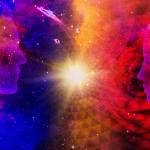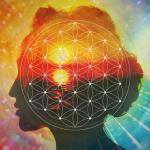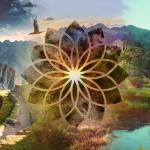 By Lily Yeh
By Lily Yeh
When I see poverty, crime, and despair in places that feel broken, I also see the enormous potential and readiness for transformation and rebirth. Creativity and beauty are powerful agents for healing and change. I work with poor communities around the globe practicing the arts to bring healing, self-empowerment and social change.
I have come to realize that broken communities are my canvases; people’s stories are the pigments, and their talents are tools that shape the public art that we create together. This has been played out in various locations around the world over my career, including North Philadelphia, in Korogocho (Nairobi) and in Rwanda. This kind of art comes from the heart, and reflects the pain and sorrow of people’s lives. It also expresses their aspirations and dreams.
Through working together, we can transform anguish and sorrow into beauty, hope and joy. This process helps to lay the foundation of building a genuine community in which people are reconnected with their families, sustained by meaningful work, nurtured by the care of each other and will, together, raise and educate their children.
 Much of the destruction in this world has been caused by natural disasters, but much more by the actions of humans. The problems are so pervasive and mammoth that policies and solutions offered by governments, powerful businesses and academic institutions alone cannot solve the life-threatening challenges we are facing today. What is an individual to do in the face of the enormity of our world’s problems?
Much of the destruction in this world has been caused by natural disasters, but much more by the actions of humans. The problems are so pervasive and mammoth that policies and solutions offered by governments, powerful businesses and academic institutions alone cannot solve the life-threatening challenges we are facing today. What is an individual to do in the face of the enormity of our world’s problems?
When the solutions escape the experts in our society, the collective wisdom emerging from many people’s awakened creativity might guide us to some possible answers. This is exactly what I do in my projects in many places in the world: empower people to reconnect with their innate creativity, see the hidden resources in seemingly depleted and broken places, and work together to reach a shared prosperity.
Art is a powerful vehicle for social change. Here I want to share an experience that helped to shape my life’s journey. It took place in a place called Korogocho in 1994.
Situated on the outskirts of Nairobi, Korogocho is a shantytown built around a huge garbage dump. 150,000 people live in a congested area of 0.6 square mile. Thousands try to eke out a living from the dump. People experience the violence of poverty and deprivation on so many levels –filth, the lack of clean water, air, opportunities, and hope.
Overwhelmed, I asked myself, “What to do?” My answer, came, “Bring colors.”
Father Alex Zanotelli dedicated his life to serve the poor. His church, located on the edge of the dump and a refuge for thousands of people, became our project site.
No one could have imagined that beauty could exist in such a place, including me. But as our brightly colored murals emerged, the mood in the community began to change. When we dared to place the freshly carved angels on top of an abandoned quarry structure, to guard and bless this endangered community, the spirit of the people soared.
Creating art in forlorn and forsaken places is like making fire in the frozen darkness of a winter’s night. It brings light, warmth, hope and it beckons people to join in.
Word spread. People heard that an artist from America was working with residents in the dumpsite community in Korogocho. Over a thousand people attended our dedication. Our honored guests included members from various embassies, the Kenyan government, representatives from private foundations, and universities. Most of them had never set foot in this pain-inflicted community. To our surprise, American Ambassador Aurelia Brazeal appeared in person to honor the occasion.
On that day I felt the immense power of art. Through our collaborative action in creating beauty, we empowered ourselves to push open the weighty hell gate of the vast slum so that sunlight poured in. Father Alex commented, “It is important that we bear witness in places like Korogocho. It helps people to feel that they are not forgotten and they do not suffer in vain.”
We all have the power to bear witness in places in need. If we can listen deeply and have courage to follow the voice that comes from our heart, our action will have the power to transform.
Lily Yeh was born in China and grew up in Taiwan. She came to the U.S. during the 60s to study art at the University of Pennsylvania, where she received her M.F.A. She taught at the University of the Arts for near three decades. But it is through her pioneering work in building communities through art that she has made her mark on this world.
Lily has earned many prestigious honors during her twenty-eight year career in public art. Her projects have taken her across the world to places in the Americas, Europe, Africa, Middle East, and Asia. But mostly, she describes herself by just one word, artist.
Lily is rather a peculiar kind of artist. She doesn’t have a studio and you won’t find her work in galleries. You will find it on the walls and in the streets of some of the world’s most challenged and traumatized places.
Her mission is to bring beauty to the “broken places” in the world that beckon her. There, she creates art with people.
Lily says that her work in the public is intimately connected to her experiences in her personal life. Her story is a private journey made public. To her, being an artist is a way of life. It is about delivering the vision one is given... and about doing the right thing without sparing oneself.
The photos in this article are from Barefoot Artists, an organization founded by Lily Yeh in 2002. Barefoot Artists brings the transformative power of art to the most impoverished communities in the world through participatory and multifaceted projects that foster community empowerment, improve the physical environment, promote economic development, and preserve and support indigenous art and culture. To learn more about Lily Yeh and Barefoot Artists, click here.








